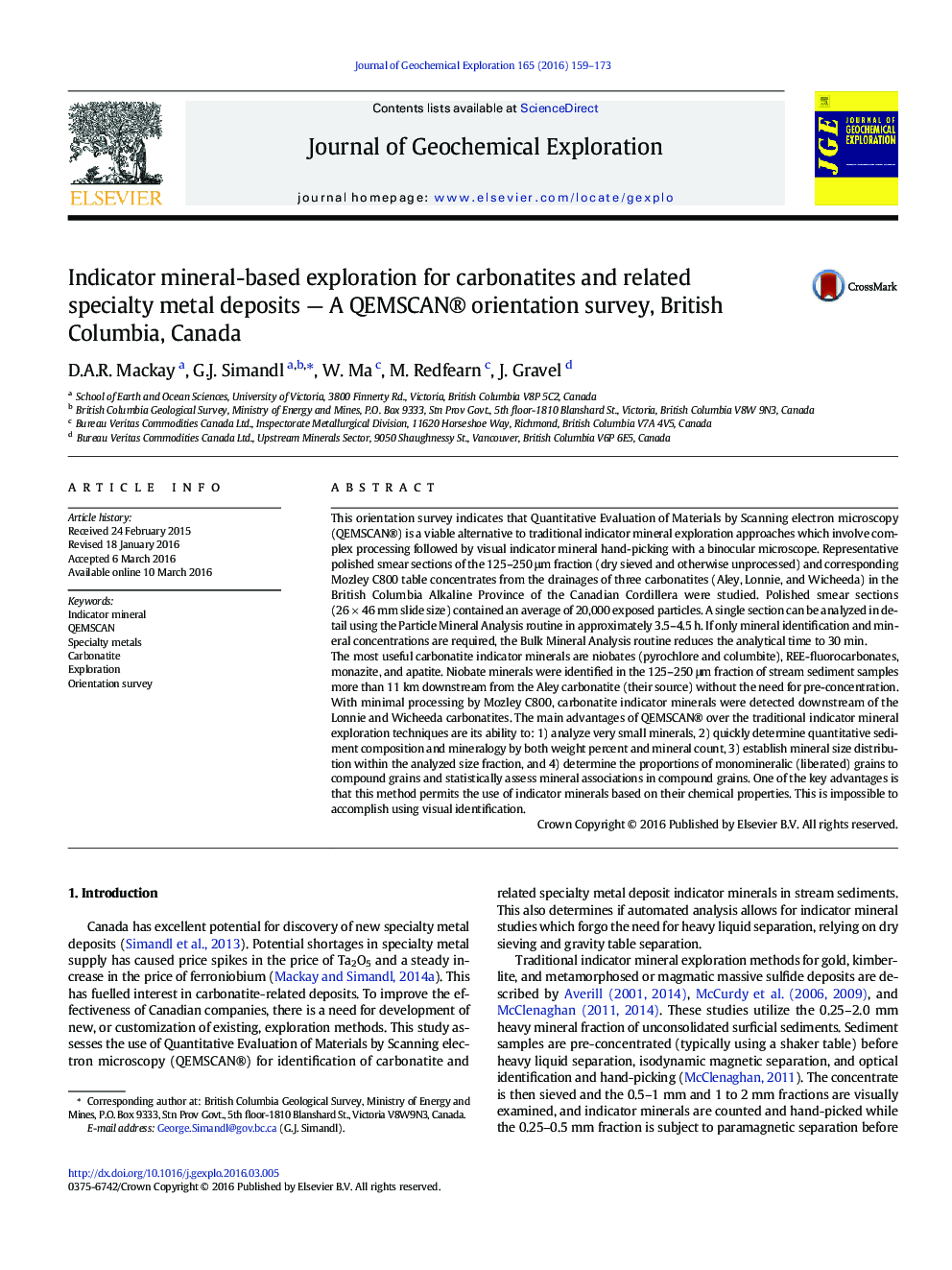| کد مقاله | کد نشریه | سال انتشار | مقاله انگلیسی | نسخه تمام متن |
|---|---|---|---|---|
| 4456933 | 1620894 | 2016 | 15 صفحه PDF | دانلود رایگان |

• Develop and optimize an indicator mineral technique for specialty metal deposits
• QEMSCAN is a possible alternative to traditional indicator mineral approaches.
• Minimal processing of stream sediments is required for this technique.
• Confirms viable indicator mineral species for carbonatites
This orientation survey indicates that Quantitative Evaluation of Materials by Scanning electron microscopy (QEMSCAN®) is a viable alternative to traditional indicator mineral exploration approaches which involve complex processing followed by visual indicator mineral hand-picking with a binocular microscope. Representative polished smear sections of the 125–250 μm fraction (dry sieved and otherwise unprocessed) and corresponding Mozley C800 table concentrates from the drainages of three carbonatites (Aley, Lonnie, and Wicheeda) in the British Columbia Alkaline Province of the Canadian Cordillera were studied. Polished smear sections (26 × 46 mm slide size) contained an average of 20,000 exposed particles. A single section can be analyzed in detail using the Particle Mineral Analysis routine in approximately 3.5–4.5 h. If only mineral identification and mineral concentrations are required, the Bulk Mineral Analysis routine reduces the analytical time to 30 min.The most useful carbonatite indicator minerals are niobates (pyrochlore and columbite), REE-fluorocarbonates, monazite, and apatite. Niobate minerals were identified in the 125–250 μm fraction of stream sediment samples more than 11 km downstream from the Aley carbonatite (their source) without the need for pre-concentration. With minimal processing by Mozley C800, carbonatite indicator minerals were detected downstream of the Lonnie and Wicheeda carbonatites. The main advantages of QEMSCAN® over the traditional indicator mineral exploration techniques are its ability to: 1) analyze very small minerals, 2) quickly determine quantitative sediment composition and mineralogy by both weight percent and mineral count, 3) establish mineral size distribution within the analyzed size fraction, and 4) determine the proportions of monomineralic (liberated) grains to compound grains and statistically assess mineral associations in compound grains. One of the key advantages is that this method permits the use of indicator minerals based on their chemical properties. This is impossible to accomplish using visual identification.
Journal: Journal of Geochemical Exploration - Volume 165, June 2016, Pages 159–173